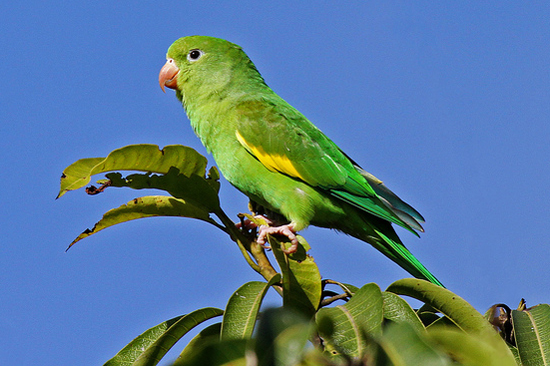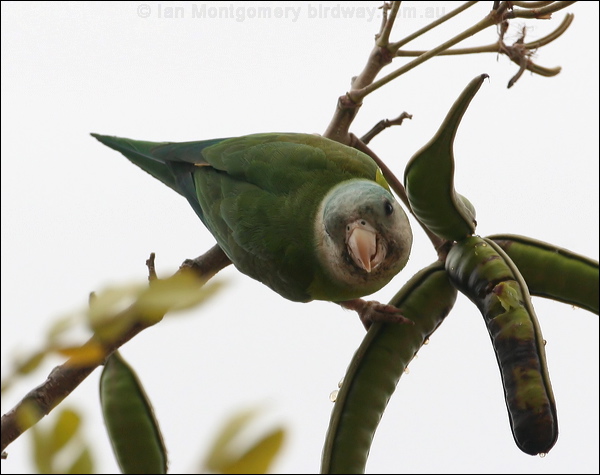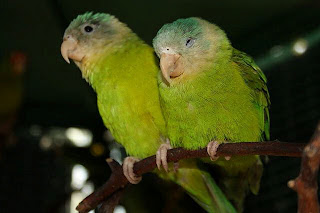Canary-winged Parakeet (Brotogeris versicolurus versicolurus)
New classification:
White-winged Parakeet (Brotogeris versicolurus) = yellow and white on the wing span
- California Parrot Project
- FWC.com
- IBC Collection
- IUCN Species list
- Photos: Google | Flickr
- Species Profile - Avianweb.com
- Species Profile - BirdChannel.com
- Species Profile - Birdforum.net
- Species Profile - NeotropicalBirds
- Species Profile - Oiseaux.net
- Species Profile - Wikipedia
- Species Profile - World Parrot Trust
- Species Profile - Zeco
- Videos: YouTube
- Brightsmith, Donald. "White-winged and Yellow-chevroned Parakeets" in Poole, A. and F. Gill, eds., The Birds of North America, No. 385-387, National Academy of Sciences, Philadelphia, PA, 1999.
- Diamond, Jared M. and John W. Terborgh. "Observations on Bird Distribution and Feeding Assemblages Along the Rio Callaria, Deptment of Loreto, Peru," The Wilson Bulletin," (Sep. 1967) 79:273-282 (re: B. versicolorus: 276,280).
- Leck, Charles F. "Observations of birds at Cecropia trees in Puerto Rico," The Wilson Bulletin," (Dec. 1972) 84:498-500 (re: B. versicolorus).
- Also see the Yellow-chevroned Parakeet page. Canary-winged parakeets (now called Yellow-chevroned) and White-winged parakeets were often grouped together as the same bird, so many articles may be about both of these Brotogeris parakeets.












.jpg)